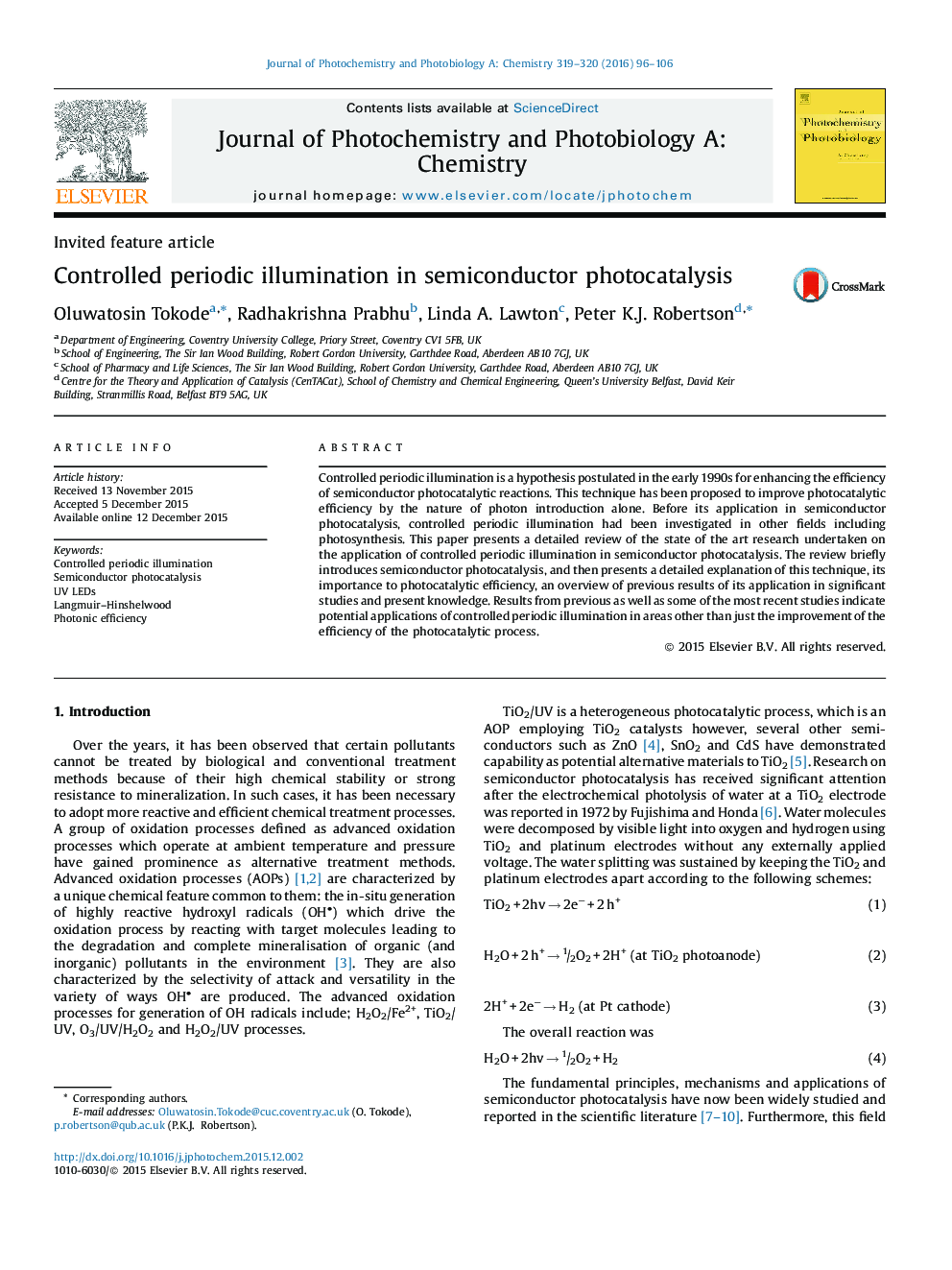| کد مقاله | کد نشریه | سال انتشار | مقاله انگلیسی | نسخه تمام متن |
|---|---|---|---|---|
| 25826 | 43886 | 2016 | 11 صفحه PDF | دانلود رایگان |
• Use of controlled periodic illumination (CPI) for photocatalysis is critically reviewed.
• Experimental and theoretical studies are examined with emphasis on two theoretical models.
• A Langmuir–Hinshelwood model for incorporating CPI failed to predict photocatalytic rates.
• A quantum yield model showed good agreement with experimental data.
• Recent research in CPI have shown new applications of CPI that differ from the original hypothesis.
Controlled periodic illumination is a hypothesis postulated in the early 1990s for enhancing the efficiency of semiconductor photocatalytic reactions. This technique has been proposed to improve photocatalytic efficiency by the nature of photon introduction alone. Before its application in semiconductor photocatalysis, controlled periodic illumination had been investigated in other fields including photosynthesis. This paper presents a detailed review of the state of the art research undertaken on the application of controlled periodic illumination in semiconductor photocatalysis. The review briefly introduces semiconductor photocatalysis, and then presents a detailed explanation of this technique, its importance to photocatalytic efficiency, an overview of previous results of its application in significant studies and present knowledge. Results from previous as well as some of the most recent studies indicate potential applications of controlled periodic illumination in areas other than just the improvement of the efficiency of the photocatalytic process.
Figure optionsDownload as PowerPoint slide
Journal: Journal of Photochemistry and Photobiology A: Chemistry - Volumes 319–320, 15 March–15 April 2016, Pages 96–106
